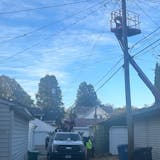Some 40 years ago, I walked into Planned Parenthood for the first time. I was 25, newly married, in need of birth control and living through what we now call our "Hamburger Helper" years.
I stopped at the clinic in downtown Minneapolis and recall being vaguely annoyed that the nurse couldn't just dash off a prescription and send me on my way. Despite my pleading and cajoling, she wouldn't budge.
"No exam, no pills," she said firmly. So I grabbed the appointment card, slamming the door on the way out.
A few days later, a resident — one of the many who rotated through the clinic — bopped into the examining room. The fact that he looked my age, had curly dark hair and dressed in tennis whites (it was a Saturday) while I was wrapped in a flimsy paper gown did little to improve my mood.
After I got dressed, he put a hand on my knee and said he had "concerns." He was sending me to a specialist on Monday morning, turning my annoyance into anger. Clearly, this just-out-of-school doctor must have finished at the bottom of his class.
But on Monday, the specialist confirmed the resident's suspicions. Something was growing in my abdomen — and growing fast. I went from the office to the now-defunct Mount Sinai Hospital, where my husband met me with a grim expression and an overnight bag.
The next few days were a blur of being poked and prodded, of endless scans and tests. This was craziness. Healthy 25-year-olds with no symptoms simply do not blithely go from running errands to a hospital room before they've even finished all their wedding thank-you notes.
The diagnosis: non-Hodgkin's lymphoma. Next came surgery in the early morning hours of a gray February day. When I woke up in recovery, no one had to tell me that I'd had a hysterectomy. One glance at the clock — now at 4:02 p.m., seven hours later — was all I needed to know.


